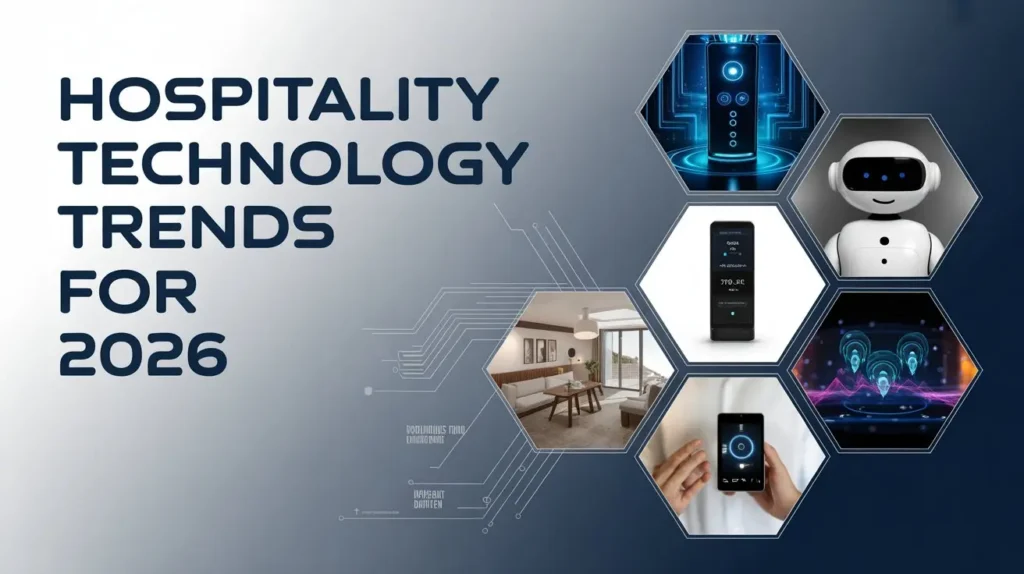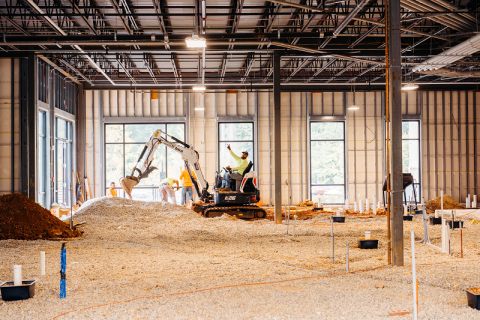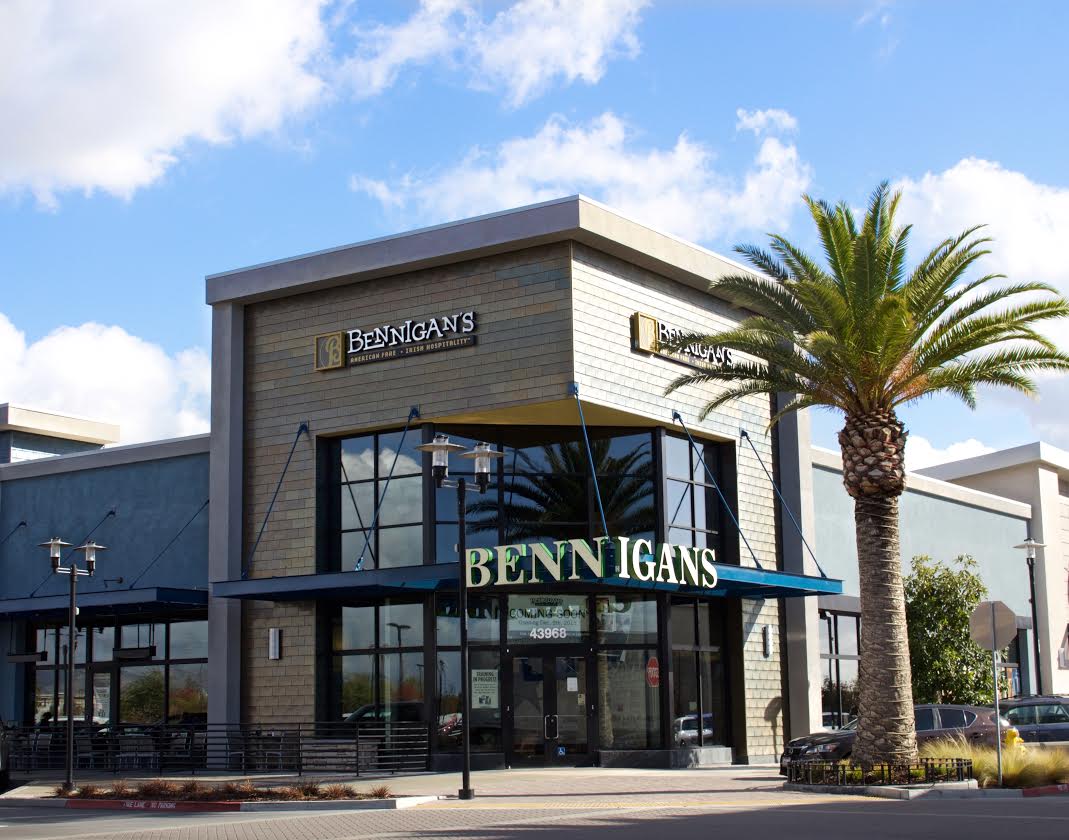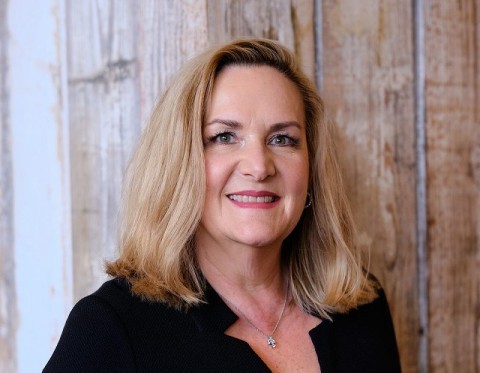Technology is now central to how hotels operate and how guests choose where to stay. By 2026, the combination of guest expectations, cost pressures, workforce limits, and sustainability demands will make technology not an optional add-on but a core part of hotel strategy. Global and regional forces are pushing hoteliers to adopt tools that improve guest satisfaction, reduce operating costs, create new revenue opportunities, and protect the environment.
This article explains the major technology trends that will shape hospitality in 2026, adds real, recent data, and gives clear, actionable tips and a regional focus for Pakistan and South Asia. Use this as both strategy guidance and as a practical checklist for immediate action.
1. AI and automation, from guest service to operations
AI is no longer experimental. Hotels are planning large-scale AI deployments and pilots that reach from guest messaging to revenue management to operations.
Key facts and context
- Nearly 9 out of 10 hoteliers plan to deploy new AI solutions in and around 2026. This includes chatbots, advanced messaging, and AI for pricing and operational decisions.
- A major barrier to AI delivering full value is fragmented systems. Until data flows freely between PMS, CRM, revenue engines, and service apps, AI cannot deliver end-to-end personalization and automation at scale. Only about half of the properties report mostly integrated toolsets.
Practical tips you can implement now
- Start small, scale fast. Pilot one guest-facing AI, for example, an automated messaging flow for check-in and basic requests. Measure response time, guest satisfaction, and any uplift to ancillary sales.
- Use AI for operations where results are measurable. Examples include predictive maintenance to reduce downtime and AI scheduling for housekeeping to lower labor costs per occupied room.
- Create an AI readiness checklist. Ensure your PMS and CRM are accessible via API and that data quality is audited before building AI on top.
Why this matters
AI can reduce repetitive tasks and allow staff to focus ohigher-valueue, human interactions. For revenue teams, AI fine-tunes pricing in minutes, not hours, improving RevPAR. For operations, predictive maintenance avoids expensive emergency repairs.
2. Smart rooms and IoT at scale
Smart room features and Internet of Things devices provide guest personalization and measurable operational savings when deployed well.
Recent market signals
- Analysts and industry reports show rapid growth in the smart hospitality market, with strong forecasts for the coming years. Several market reports indicate high CAGR figures for smart hospitality, driven by IoT adoption, better connectivity, and demand for personalized stays.
Tips for a low-risk rollout
- Prioritize energy and occupancy sensors in high-use areas first. These deliver the fastest payback through lower energy bills.
- Choose modular devices that support open standards and standard APIs, so you can replace or add devices without vendor lock-in.
- Test smart room features as a premium offering in a small room block before rolling out property-wide. Market the smart room as an upgrade and measure uptake.
Operational benefits to quantify
- Energy savings from smart HVAC and sensor-based lighting.
- Fewer maintenance emergencies thanks to predictive alerts.
- Higher guest satisfaction when rooms remember preferences and allow simple mobile or voice control.
3. Unified tech stacks and real-time analytics
Fragmented technology stacks reduce the value of every other tech investment. Unified systems and real-time analytics unlock personalization and revenue.
The situation now
- Even as hotels plan AI, many still operate with disconnected systems. This prevents real-time analytics and personalized marketing. A recent industry forecast highlighted that only about 54 percent of properties report mostly integrated tools. Integration is the foundation required to make advanced tech meaningful.
Actionable roadmap for integration
- Map all systems. Create an inventory of PMS, CRS, CRM, POS, housekeeping systems, payment gateways, and third-party connectors.
- Prioritize integrations using a revenue and guest experience lens. First, integrate PMS with CRM and your revenue engine, then add POS and guest apps.
- Use middleware or an integration platform that supports open APIs to reduce custom engineering work.
Quick wins to track
- Percentage of guest profiles unified across systems.
- Time to resolve guest requests when data is available.
- Uplift in targeted ancillary offers conversion.
4. Contactless and mobile guest journeys
Mobile check-in, digital keys, in-app ordering, and mobile payments are shifting from differentiators to baseline services for many segments. Real-world adoption and evidence
- Surveys show strong traveler preference for mobile check-in and app-based interactions. In some markets, up to 70 percent of guests say they are likely to use app or kiosk check-in instead of the front desk. Other case studies report big reductions in front desk wait times and an uplift in ancillary revenue when mobile journeys are implemented.
Practical tips for implementation
- Offer mobile check-in and digital keys at first to loyalty members and direct bookers. This lets you test and refine flows before broad rollout.
- Ensure a clear fallback to human service. For certain guest segments, a human welcome is important. Train staff on hybrid flows that support both digital and personal interactions.
- Integrate mobile payments with your POS and billing system so all spend appears on the guest folio seamlessly.
Benefits you should expect
- Lower queue times at the front desk.
- Higher ancillary revenue from in-app ordering and targeted offers.
- Improved guest satisfaction for mobile-preferring demographics.
5. Sustainability and wellness tech as business levers
Sustainability and wellness are sources of cost savings and guest preference, not just marketing claims.
Facts and market direction
- Energy management, waste reduction, and other sustainability technologies are gaining adoption because they reduce operating costs and meet growing guest expectations for eco-friendly stays. Industry sources show increasing uptake of these technologies and forecast continued investment.
Practical, high-impact initiatives
- Begin with LED retrofits and smart controls in high usage areas. These projects typically have short payback periods and are straightforward to measure.
- Deploy water and energy dashboards. Visibility on consumption drives behavior change and investment prioritization.
- Promote wellness features that can be implemented with modest cost. Examples include portable air quality monitors in rooms, sleep program partnerships, and curated in-room wellness content.
How to measure success
- Track kWh saved per occupied room.
- Monitor guest satisfaction on wellness and sustainability attributes.
- Calculate gross margin improvement from reduced utility bills.
6. Revenue innovation, payments, and ancillary services
Hotels are expanding the products they sell beyond the room. Technology enables memberships, day-use, experience packages, and smoother payment flows.
Evidence and trends
- The demand for ancillary services and subscriptions is rising, and data shows hotels that offer in-app F&B ordering and personalized upsells see higher per-guest revenue. Modern payment options, including digital wallets and regional wallet integrations, increase conversion for upsells.
Actionable tactics
- Integrate POS with your guest app. This captures ancillary orders and makes billing clean.
- Test a subscription or membership pilot for frequent guests. Examples include weekend access packages, co-working plus discounted stays, and F&B bundles.
- Use data to time offers. For instance, promote spa or dinner packages to guests who previously booked similar items within the guest profile.
Revenue metrics to monitor
- Ancillary revenue per occupied room.
- Conversion rate of in-app offers.
- Repeat purchase rate among members or subscribers.
Geo-centric focus for Pakistan and South Asia
South Asia presents unique risks and opportunities for hospitality tech adoption. Understanding the local reality helps create realistic, high-impact projects.
Opportunities
- Mobile first markets. High mobile phone usage means mobile check-in, mobile apps, and wallet integration can have rapid adoption if designed with local payment methods and languages in mind.
- Leapfrogging legacy tech. Some properties can adopt modern cloud solutions without the burden of migrating large on-premise systems.
- Domestic tourism growth. Local demand supports pilots on day-use, local membership, and weekend packages.
Challenges
- Infrastructure constraints. Internet reliability and intermittent power can make fully connected solutions brittle unless vendors provide offline-capable modes.
- Payment complexity. International guests expect global payment rails, while local guests often use domestic wallets. Both must be supported.
- Skills gap. Staff need upskilling on digital operations and data literacy.
Local strategies and tips
- Choose cloud vendors with regional support and offline capability.
- Integrate local wallet providers and popular domestic payment rails first to ensure high conversion for domestic bookings.
- Run pilot programs with a single property or small group, measure KPIs, then scale regionally.
Implementation roadmap and checklist
A focused rollout reduces risk and ensures measurable results.
5-step plan
- Audit, month 0 to 1. Inventory tech, integrations, cost centers, and guest touchpoints.
- Pilot, months 2 to 6. Run 1 to 2 pilots, such as mobile check-in and an energy retrofit, and track KPIs.
- Integrate, months 6 to 12. Connect PMS, CRM, and revenue systems to enable real-time decisions.
- Scale, year 1 to 2. Roll out pilots that show ROI across properties or room types.
- Optimize, ongoing. Continue measuring guest satisfaction, energy saving, and revenue.
Immediate checklist for busy operators
- Audit system integrations and identify one integration to prioritize.
- Launch a mobile check-in pilot for a subset of guests.
- Retrofit high-use public spaces with LED and occupancy sensors.
- Start gathering clean guest preference data in your CRM to enable personalization.
Common risks and mitigation
Risk, mitigation, and short tip
- A fragmented system can be mitigated by selecting vendors with open APIs and prioritizing a middleware approach.
- Data security is mitigated with clear data governance, encrypted payments, and a privacy policy tailored to local laws.
- Staff resistance, mitigated through communication, incentives, and clear training modules with early visible wins.
FAQs
- What technology trend will have the biggest impact in 2026?
AI combined with unified data systems will likely have the largest impact. AI requires integrated data to personalize guest experiences and automate operations effectively. - How much should a mid-sized hotel budget for tech upgrades?
Budget depends on priorities. Focus first on integrations that stop revenue leakage and guest journey improvements that shorten guest handling time. Many hotels fund pilots from short-term savings and scale once KPIs are met. - Are smart rooms worth it for smaller hotels in Pakistan?
Selectively yes. Prioritize high ROI items first, such as thermostats and occupancy sensors. Consider offering smart rooms as a premium product rather than retrofitting every unit immediately. - Will contactless service reduce guest satisfaction?
Some guests prefer human interaction. Offer hybrid flows and ensure staff are available to provide personal service when requested. - How quickly do tech investments pay off?
Small pilots, such as mobile check-in in can show benefits in months. Larger projects like full integrations and energy retrofits usually take 12 to 36 months to reach full ROI. - What are the most common implementation mistakes?
Buying tech without integration planning, skipping staff training, not measuring KPIs, and choosing vendors without local support. - How do hotels increase ancillary revenue effectively?
Use guest data to create timely, relevant offers. Integrate ordering and payments into a single app experience with one-click purchase.
Conclusion
Technology for hospitality in 2026 will be valuable only when it is strategic, integrated, and measured. Hotels that connect systems, pilot AI where it drives clear value, improve mobile guest journeys, and invest in staff will be better positioned to grow revenue, lower costs, and meet evolving guest expectations. For hotels in Pakistan and South Asia, the ability to adopt mobile-first solutions and to leapfrog legacy systems presents a real chance to compete on quality and guest experience.
Start with an audit, run measurable pilots, integrate systems, and scale the winners. The next 18 months are critical to prepare for a 2026 environment where guest expectations and operational realities will reward the strategic adopter.








